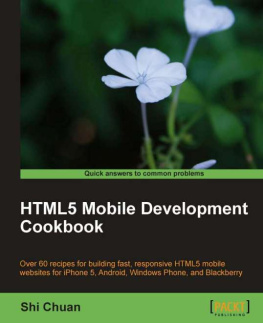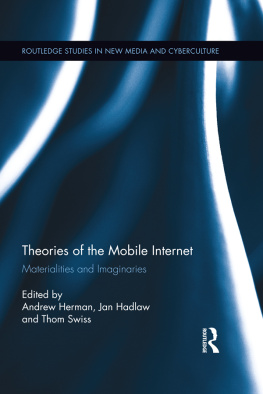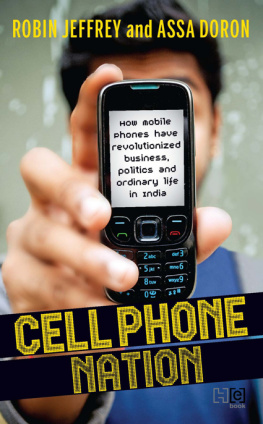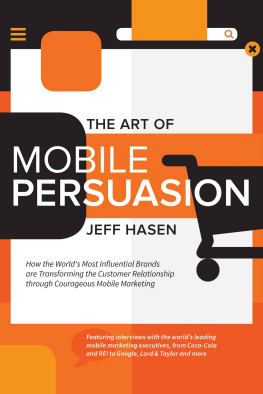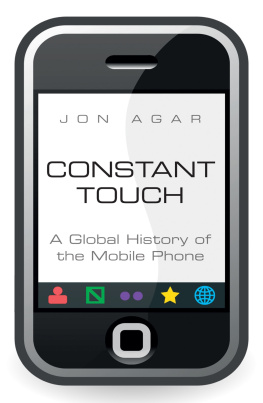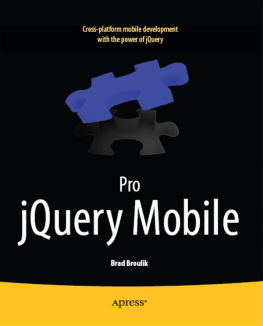
Mobile Phone Cultures
Mobile cell phones are used all around the world, and now play an important role in the everyday lives of billions of people. What do we really know about mobile phone culture, however? This fascinating, provocative and comprehensive collection explores the cultural and media dimensions of mobile phones around the world with an international cast of contributors and case studies from many countries across the Americas, Europe and Asia.
Mobile Phone Cultures looks at how mobiles have been imagined through advertising and social representations, traces the scripting and shaping of the technology through gender, sexuality, religion, communication style, and delves into the locations of mobile culture in modernity, urban settings, and even trans-national families. The book also offers a guide to convergent mobile phone culture, with fresh, innovative accounts of text messaging, Blackberry, camera phones, moblogging, and mobile adventures in television. Indispensable for communication, cultural, media, mobile and Internet studies scholars and students alike, Mobile Phone Cultures opens up important new perspectives on how we understand this intimate yet public cultural technology.
This book was previously published as a special issue of Continuum: Journal of Media and Cultural Studies.
Gerard Goggin is Professor of Digital Communication and deputy director of the Centre for Social Research in Journalism and Communication, University of New South Wales, Sydney, Australia. He has published widely on new media and culture, and his books include Internationalizing Internet Studies (2007), Cell Phone Culture (2006), Virtual Nation: The Internet in Australia (2004), and Digital Disability (2003). Gerard is editor of Media International Australia.
Mobile Phone Cultures
Edited by
Gerard Goggin
First published 2008 by Routledge
2 Park Square, Milton Park, Abingdon, Oxon, OX14 4RN
Simultaneously published in the USA and Canada by Routledge
711 Third Avenue, New York, NY 10017
Routledge is an imprint of the Taylor & Francis Group, an informa business
2008 Gerard Goggin
Typeset in Minion 10.5/13pt by the Alden Group, OxfordShire
All rights reserved. No part of this book may be reprinted or reproduced or utilised in any form or by any electronic, mechanical, or other means, now known or hereafter invented, including photocopying and recording, or in any information storage or retrieval system, without permission in writing from the publishers.
British Library Cataloguing in Publication Data
A catalogue record for this book is available from the British Library
ISBN 13: 978-0-415-42530-8
CONTENTS
GERARD GOGGIN
IMAGINING MOBILES
JUAN MIGUEL AGUADO & INMACULADA J. MARTNEZ
ALBERTA CONTARELLO, LEOPOLDINA FORTUNATI & MAURO SARRICA
CATHERINE A. MIDDLETON
SHAPING MOBILES
LESLIE REGAN SHADE
HEIDI CAMPBELL
INGRID RICHARDSON
CHRIS CHESHER
LOCATIONS OF MOBILE CULTURE
LARISSA HJORTH
TANYA BATSON-SAVAGE
CECILIA UY-TIOCO
MARK MCLELLAND
MOBILE IMAGE AND TEXT
LISA GYE
VIRGINIA NIGHTINGALE
ANGEL M. Y. LIN & AVIN H. M. TONG
CHRISTINA SPURGEON & GERARD GOGGIN
Gerard Goggin
With mobile phones firmly ensconced in the car, hand, and pockets, and adorning the bodies and the clothes of literally billions of people around the world, it is high time for a consideration of the cultures associated with this exemplary everyday technology.
Certainly, there is no lack of popular, policy, industrial, and now scholarly interest in mobile technologies. In 20052007 there has literally been an outpouring of books from the academic pressesmost of which are discussed or at least mentioned in the pages that follow. The field of mobile studies is now a fascinating interdisciplinary and increasingly international one, which overlaps, and may be contrasted with, a number of other inquiries into technology, not least Internet studies. Yet while scholarship relating to mobiles has centred on questions of communication and the social in particular (if I may be permitted such a generalization), there has not yet been the sustained concentration on questions of culture that the technology, its meanings, practices, and consumption merit.
To bring together leading cultural studies of mobiles, then, is the rationale for this collection. The journal Continuum is a perfect venue for such a presentation because it addresses audiences and specialists in cultural and media studies. My sense is that cultural and media studies have been slower than other disciplines to approach mobiles as an object of study. Elsewhere I have suggested that this has to do with the history of telecommunications and its study (Goggin, 2006, 2007). The telephone and telecommunications have not received the same attention in cultural and media studies, as, for instance, have communications and media technologies and forms subtended by press, radio, and television, or even certain new media forms such as video and computer games, and the Internet.
At this conjuncture, however, attention to the cultural and media aspects of mobiles is something sorely needed. There is the task of analysis and theorization of mobiles cultures, recognizing their specific contexts, and then the tracing of the articulations of these with other forms of communicative and media cultures. Then there is the comprehension of mobiles cultures as part of the larger local and international logics of cultural transformation.
Just as cultural and media scholars have something quite important to add to the endeavour of understanding mobiles, they also have something to gainover and above the imperative of rethinking their concepts, methods, and dispositions in the encounter with and construction of a new object of study. The belated arrival of cultural and media studies on the scene means that it needs to enter a dialogue with the many approaches, disciplines, and relatively well-developed understandings and assumptions that already traverse the rich field of mobile studies. This necessarily brief establishment of this context hopefully explains key features of this collection, and draws attention to some possibilities it holds.
The collection opens with three papers on aspects of Imagining Mobiles. Leading Spanish scholars Juan Miguel Aguado and Inmaculada J. Martnez take an international look at the important role of advertising discourses in their The Construction of the Mobile Experience: the Role of Advertising Campaigns in the Appropriation of Mobile Phone Technologies. One of the foremost scholars of mobiles today, Leopoldina Fortunati, is joined by her colleagues Alberta Contarello and Mauro Sarrica in their Social Thinking and the Mobile Phone, a fascinating study that takes a social representations approach to understanding how the mobile phone is conceived by its users. Catherine Middleton contributes a study of the much loved and equally reviled Canadian BlackBerry technology in her Illusions of Balance and Control in an Always-on Environment.
The theme of the next section is Shaping Mobiles, and the four papers under this rubric offer different perspectives on this. Leslie Regan Shade investigates the striking invocations of gender that mediate mobiles in her Feminizing the Mobile: Gender Scripting of Mobiles in North America. In What Hath God Wrought? Considering How Religious Communities Culture (



